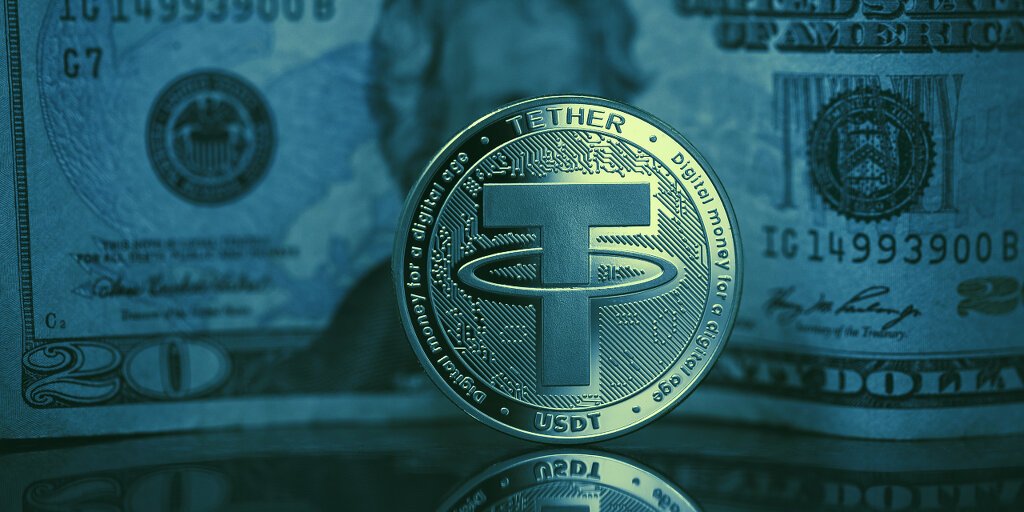Hindenburg Research, a financial research firm focused on short-selling and exposing fraud, has announced a reward of up to $1,000,000 for “exclusive details” on the “supposed reserves” backing Tether (USDT), the world’s largest stablecoin.
The firm said that the Hindenburg Tether Bounty Program aims to uncover “information leading to previously undisclosed details” about Tether’s backing, as the “disclosures around its holdings have been opaque.”
We have doubts about the legitimacy of Tether, so today we announce the Hindenburg Tether Bounty Program, a reward of up to $1,000,000 for details on Tether’s backing.
— Hindenburg Research (@HindenburgRes) October 19, 2021
Tether Limited, the issuer of the stablecoin, has historically claimed that each USDT is pegged at 1:1 to the U.S. dollar, though critics have repeatedly questioned this claim.
Earlier this year, the firm revealed that as of March 2021 only 76% of its reserves were held in cash and cash equivalents, with the remainder of the reserves allocated to secured loans, bonds, and other investments, including Bitcoin.
A subsequent assurance report released in August indicated that a mere 10% of the stablecoin’s backing comes from cash and bank deposits, while nearly 50% of the reserves, or more than $30 billion, were held in commercial paper—a form of unsecured, short-term debt issued by a corporation.
“We feel strongly that Tether should fully and thoroughly disclose its holdings to the public,” said Hindenburg Research founder Nathan Anderson. “In the absence of that disclosure, we are offering a $1,000,000 bounty to anyone who can provide us exclusive detail on Tether’s supposed reserves.”
Tether’s reserves under the lens
This is not the first time the stablecoin’s backing has been questioned.
The announcement of the Hindenburg Tether Bounty Program comes hot on the heels of Tether being slapped with a $41 million fine by the Commodity Futures Trading Commission (CFTC) for providing “untrue” statements about its fiat-backed reserves.
According to the regulator, for the majority of the period between June 1, 2016, to February 25, 2019, Tether’s cryptocurrency was not fully backed by the U.S. dollar as the firm claimed. Further, the stablecoin provider didn’t disclose the fact that it included many non-fiat assets in its reserves.
Crypto exchange Bitfinex, which is Tether’s sister company, was also hit with a $1.5 million fine for allegedly letting American residents buy and sell Bitcoin and USDT without having registered with the CTFC.
To add to the controversy, Alex Mashinsky, the CEO of crypto lending platform Celsius Network, recently alleged that Tether is now issuing its dollar-pegged coins in exchange for cryptocurrencies like Bitcoin and Ethereum, which, if true, violates the firm’s own term of service.
UPDATE, Oct. 20 at 10:20am EST: A spokesperson for Tether sent Decrypt this vociferous response to the Hindenburg bounty announcement.
“This stunt from Hindenburg Research is a pathetic bid for attention while others are making real change and building wealth and results,” Tether says. “They are attempting to discredit not just Tether, but an entire movement. Thankfully, everyone sees through their opportunism as Bitcoin approaches another all time high.This is not the first time Hindenburg Research has orchestrated an apparent scheme in pursuit of profit. Nor will it be the last. Tether abhors and denounces their actions and transparent motives. Tether’s history of always honoring our customers’ needs, while navigating developing regulations and industry norms, shows our primary commitment to our stakeholders through trust and innovation.Tether is a trailblazer, a special breed in business, and we have big visions for the future. Like those that came before us, and those who will come after, we are scrutinized more than others, and especially our peers and competitors, but we understand our role and responsibility and will continue to focus on our customers’ requirements and defending the crypto markets”

















